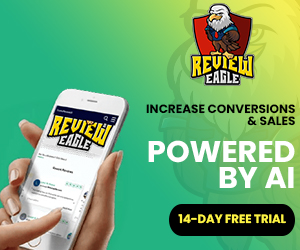You might think that aliens abducting your website visitors sounds like something out of a science fiction movie. But in the world of online marketing, this phenomenon is all too real. Imagine this scenario: a potential customer visits your website, browses through your products or services, and then leaves without making a purchase. It’s as if they were snatched away by extraterrestrial forces, never to be seen again. But fear not, because there is a way to rescue these lost website traffic and bring them back into the fold. Enter retargeting strategies – a powerful tool in the marketer’s arsenal. Retargeting works by placing a small piece of code on your website, which then tracks visitors and displays your ads to them as they continue to browse the internet. It’s like having a team of intergalactic investigators on the case, following your lost visitors wherever they go. With the right retargeting strategy, you can reel them back in and convert them into paying customers. In this blog post, we will delve deep into the world of retargeting strategies and explore how they can help you rescue your lost website traffic. We will discuss the different types of retargeting, from site retargeting to search retargeting, and how each one can be strategically used to bring back those elusive visitors. Additionally, we will explore some best practices and tips for implementing effective retargeting campaigns that will maximize your chances of success. So, if you have ever felt like aliens were abducting your website visitors, leaving you with dwindling conversion rates and a sense of frustration, this blog post is for you. Get ready to uncover the secrets of retargeting strategies and take back control over your website traffic. It’s time to turn those lost visitors into loyal customers, one ad at a time.
Are Aliens Abducting Your Website Visitors?
Are Aliens Abducting Your Website Visitors?
If you’ve noticed a suspicious drop in website traffic, it might not be the work of aliens, but rather a lack of effective retargeting strategies. Retargeting is a powerful marketing technique that allows you to reach out to potential customers who have already shown interest in your brand.
One common mistake businesses make is not properly utilizing their retargeting pixel. By placing a pixel on your website, you can track and target those who have visited your site but haven’t taken any action. This allows you to create customized ads specifically designed to re-engage these visitors and guide them back to your site.
Another strategy to consider is using dynamic retargeting ads. These ads automatically show products or services that a visitor previously viewed on your site. By reminding them of what they were interested in, you increase the chances of them returning to make a purchase.
Furthermore, segmenting your audience based on their behavior and interests can significantly improve your retargeting efforts. By tailoring your ads to specific groups, you can deliver more relevant content and increase the likelihood of conversion.
In conclusion, while aliens may not be responsible for the disappearance of your website visitors, implementing effective retargeting strategies certainly can be. By optimizing your retargeting pixel, using dynamic ads, and segmenting your audience, you can bring back lost visitors and boost your conversion rates. So, don’t let your potential customers slip away – take control of your retargeting efforts today.
The Phenomenon of Lost Website Traffic
The Phenomenon of Lost Website Traffic
Losing website traffic can be a frustrating experience for any online business. It’s like watching your potential customers disappear into thin air. But fear not, there are strategies you can employ to regain and even increase your website traffic.
One effective approach is to utilize retargeting strategies. By using pixel-based retargeting, you can reach out to visitors who have shown interest in your website before. This method allows you to serve targeted ads to these potential customers, reminding them of your brand and enticing them to return.
Another way to combat lost website traffic is by optimizing your content for search engines. Conduct keyword research to determine what your target audience is searching for. By incorporating these keywords into your website’s content, you can improve your search engine ranking and attract more organic traffic.
Additionally, engaging with your audience on social media platforms can help drive traffic back to your website. By sharing valuable and relevant content, you can pique the interest of your followers, encouraging them to visit your website for more information.
In conclusion, losing website traffic is a common occurrence, but it doesn’t have to be permanent. By employing retargeting strategies, optimizing your content for search engines, and engaging with your audience on social media, you can regain and even increase your website traffic. So don’t let lost website traffic be a phenomenon that plagues your online business. Take action and watch your traffic soar once again.
Understanding Retargeting Strategies
Retargeting strategies are a powerful tool for businesses to re-engage with website visitors who may have shown interest but didn’t convert. By understanding retargeting strategies, businesses can effectively target these potential customers and increase conversion rates.
One common retargeting strategy is pixel-based retargeting. This involves placing a small piece of code, called a pixel, on your website. When a visitor lands on your site, the pixel drops a cookie in their browser. This allows you to track their behavior and display targeted ads to them across different platforms, such as social media or other websites they visit.
Another effective retargeting strategy is email retargeting. This involves sending personalized emails to individuals who have visited your website but didn’t complete a desired action, such as making a purchase. These emails can include tailored offers or reminders to encourage them to return to your site and convert.
Dynamic retargeting is another popular strategy. It involves showing ads that are specifically tailored to the individual’s browsing behavior. For example, if a visitor added a product to their cart but didn’t check out, you can display ads showcasing that specific product to remind them of their interest.
Retargeting strategies can also be used to upsell or cross-sell to existing customers. By analyzing their purchase history or browsing behavior, you can target them with relevant offers or recommendations to increase their lifetime value.
In conclusion, understanding retargeting strategies is essential for businesses looking to maximize their conversions and reach potential customers who have shown interest in their products or services. By implementing pixel-based retargeting, email retargeting, dynamic retargeting, and upselling strategies, businesses can effectively engage with their audience and boost their overall marketing efforts.
Types of Retargeting
Types of Retargeting
Retargeting strategies have become an essential tool for marketers looking to maximize their online advertising efforts. By targeting users who have previously shown interest in their products or services, businesses can increase brand visibility and conversions. In this blog post, we will explore the different types of retargeting strategies that can be employed to reach potential customers.
1. Site Retargeting: This is the most common form of retargeting. It involves placing a pixel on your website to track visitors and display relevant ads to them as they browse other websites. Site retargeting allows you to stay top-of-mind with users who have already shown interest in your offerings.
2. Search Retargeting: This strategy targets users based on their search behavior. By using keywords related to your business, you can serve ads to users who have searched for similar products or services. Search retargeting is an effective way to reach users who are actively looking for what you offer.
3. Social Media Retargeting: With the vast user base of platforms like Facebook, Instagram, and Twitter, social media retargeting has become increasingly popular. By placing a pixel on your website, you can show ads to users who have engaged with your content or visited specific pages. This allows you to reach a highly targeted audience.
4. Email Retargeting: Email retargeting involves sending targeted emails to users who have interacted with your website but have not completed a desired action, such as making a purchase. By reminding them of the products or services they showed interest in, you can encourage them to convert.
In conclusion, retargeting strategies offer businesses an effective way to re-engage with potential customers and increase conversions. By utilizing site retargeting, search retargeting, social media retargeting, and email retargeting, businesses can optimize their online advertising efforts and maximize their return on investment.
Site Retargeting: Bringing Back Visitors Who Abandoned Your Website
Site retargeting is a powerful strategy that can help bring back visitors who have abandoned your website. This technique allows you to reach out to those who have shown interest in your site but left without taking any action. By displaying targeted ads to these visitors as they browse the web, you can remind them of your brand and entice them to return.
The concept behind site retargeting is simple. When a user visits your website, a cookie is placed on their browser. This cookie then allows you to track their online activities and display relevant ads to them on other websites they visit.
Retargeting strategies can be highly effective in converting lost visitors into customers. By presenting personalized ads based on their previous interaction with your site, you can increase brand awareness and encourage them to come back and complete their purchase.
To make the most of site retargeting, it’s important to segment your audience and create tailored ads that resonate with each group. By analyzing their behavior on your site, you can gain insights into their interests and preferences. This information can then be used to create targeted campaigns that speak directly to their needs.
In conclusion, site retargeting is a valuable tool in your marketing arsenal. By bringing back visitors who abandoned your website, you have the opportunity to convert them into loyal customers. By implementing effective retargeting strategies and creating personalized ads, you can maximize your chances of success.
Search Retargeting: Reaching Out to Visitors Who Showed Interest in Relevant Keywords
Search retargeting is a powerful strategy for reaching out to visitors who have shown interest in relevant keywords. With this approach, you can effectively engage with potential customers who have already displayed a level of interest in your products or services.
Retargeting works by placing a tracking pixel on your website, which allows you to identify visitors who have interacted with specific keywords. This information is then used to display targeted advertisements to these individuals as they browse other websites or social media platforms.
By leveraging retargeting strategies, you can stay top-of-mind with potential customers who are actively searching for products or services similar to yours. This not only increases the likelihood of converting these visitors into customers but also helps to reinforce your brand and message.
To maximize the effectiveness of your retargeting efforts, it’s important to carefully select and refine your keyword targeting. This means identifying the most relevant and high-intent keywords that are likely to attract qualified leads. By focusing your efforts on these keywords, you can ensure that your retargeting campaigns are reaching the right audience.
In conclusion, search retargeting offers a valuable opportunity to connect with potential customers who have already shown interest in your offerings. By utilizing this strategy and optimizing your keyword targeting, you can increase your chances of converting leads and boosting your overall marketing success.
Social Media Retargeting: Engaging with Lost Visitors on Social Platforms
Social media retargeting is a powerful strategy to engage with lost visitors on social platforms. By utilizing retargeting strategies, businesses can effectively reach out to those who have previously shown interest in their products or services. This method allows them to reconnect with potential customers and increase conversions.
Retargeting works by placing a tracking pixel on the website, which enables businesses to track visitors and their behavior. When a visitor leaves the site without making a purchase or taking the desired action, retargeting kicks in. It displays targeted ads to these lost visitors as they browse social media platforms, reminding them of the product or service they were interested in.
One of the key advantages of social media retargeting is its ability to personalize the ads based on the visitor’s previous interactions. By analyzing their behavior, businesses can tailor the content of the ads to align with their interests and preferences. This personalized approach increases the likelihood of re-engagement and conversion.
Moreover, social media retargeting allows businesses to extend their reach beyond their website. By leveraging popular social platforms such as Facebook, Instagram, and LinkedIn, they can reach a wider audience and reinforce their brand presence.
In conclusion, social media retargeting is a valuable strategy for engaging with lost visitors. By implementing effective retargeting strategies, businesses can effectively reconnect with potential customers and increase their chances of conversion.
Email Retargeting: Reconnecting with Visitors Through Personalized Emails
Email retargeting is an effective strategy to reconnect with website visitors who may have shown interest but did not convert. By using personalized emails, you can engage with these potential customers and encourage them to take the desired action. Retargeting strategies are an essential component of any successful digital marketing campaign.
When implementing email retargeting, it is crucial to consider the behavior and preferences of your audience. Segment your email list based on their interactions with your website, such as products viewed or abandoned carts. This segmentation allows you to tailor your messages and offers to specific customer needs, increasing the chances of conversion.
Personalization is key in email retargeting. Use dynamic content to address your recipients by name and recommend products or services based on their previous actions. This level of personalization creates a sense of individual attention and increases the likelihood of engagement.
Timing is also crucial in email retargeting. Send your emails shortly after the visitor’s interaction with your website to keep your brand fresh in their minds. Additionally, consider automation tools that can trigger emails based on specific actions or time intervals.
Email retargeting is an efficient way to reignite interest and drive conversions. By utilizing personalized content, segmenting your audience, and timing your emails strategically, you can effectively reconnect with visitors and turn them into valuable customers.
Best Practices for Implementing Effective Retargeting Campaigns
Best Practices for Implementing Effective Retargeting Campaigns
Retargeting strategies are crucial for reaching potential customers who have shown interest in your products or services. By implementing effective retargeting campaigns, you can significantly improve your conversion rates and boost your overall marketing efforts. Here are some best practices to consider:
1. Define your target audience: Before starting a retargeting campaign, clearly define the audience you want to reach. Segment your website visitors based on their behavior, such as pages visited, products viewed, or actions taken. This will help you tailor your retargeting ads to specific customer groups.
2. Create compelling ad content: To grab the attention of your retargeted audience, create engaging and personalized ad content. Highlight the benefits of your products or services, offer exclusive discounts or promotions, and use eye-catching visuals to entice users to click and revisit your website.
3. Set frequency caps: While retargeting is effective, bombarding users with too many ads can be counterproductive. Set frequency caps to limit the number of times your ads are shown to a particular user within a specific time frame. This ensures that your ads remain relevant and prevent potential customers from feeling overwhelmed or annoyed.
4. Optimize landing pages: When users click on your retargeting ads, make sure they are directed to optimized landing pages. These pages should be tailored to the specific product or service featured in the ad, providing relevant information and a clear call-to-action to encourage conversions.
5. Test and analyze: Continuously test different retargeting strategies to determine what works best for your audience. Analyze data on ad performance, click-through rates, and conversion rates to identify areas for improvement and refine your campaigns accordingly.
By implementing these best practices, you can maximize the effectiveness of your retargeting campaigns and increase the chances of converting potential customers into loyal ones. Stay focused, monitor your results, and adapt your strategies accordingly to achieve optimal results.
Setting Clear Goals and Target Audience
Setting Clear Goals and Target Audience
When it comes to retargeting strategies, it is essential to set clear goals and define your target audience. Without a clear understanding of what you want to achieve and who you want to reach, your retargeting efforts may fall flat.
Firstly, establishing clear goals is crucial. Are you looking to increase conversions, drive more traffic, or increase brand awareness? By defining your objectives, you can tailor your retargeting strategy accordingly. For example, if your goal is to drive more traffic, you may want to focus on retargeting ads that encourage visitors to return to your site.
Secondly, identifying your target audience is key. Who are your ideal customers? What demographics, interests, or behaviors do they have? By understanding your target audience, you can create retargeting campaigns that resonate with them. For instance, if your target audience is tech-savvy millennials, you may want to use social media platforms for your retargeting efforts.
In conclusion, setting clear goals and defining your target audience are essential for successful retargeting strategies. By having a clear direction and understanding who you want to reach, you can create effective campaigns that bring visitors back to your website. So, don’t let your website visitors be abducted by aliens – take control with well-planned retargeting strategies.
Crafting Compelling Ads and Messages
Crafting Compelling Ads and Messages
Crafting compelling ads and messages is crucial for any marketing campaign. Whether you are promoting a product, service, or event, your ads need to grab attention and compel your target audience to take action. Here are some strategies to help you create ads that stand out from the crowd:
1. Know your audience: Before crafting your ads, it’s important to understand who you are targeting. Research your target market’s demographics, interests, and pain points. This will help you tailor your message to resonate with them on a personal level.
2. Use powerful headlines: Grab your audience’s attention with captivating headlines. Use strong, action-oriented words that create a sense of urgency. A well-crafted headline can make all the difference in getting your ad noticed.
3. Highlight benefits: Instead of simply listing features, focus on the benefits that your product or service offers. How will it solve a problem or improve the lives of your customers? Highlight these benefits in your ads to pique interest.
4. Incorporate visuals: Visual elements can greatly enhance the impact of your ads. Use eye-catching images, videos, or infographics to convey your message. Visuals are more likely to capture attention and leave a lasting impression.
5. Call to action: Every ad should have a clear call to action (CTA). Whether it’s to make a purchase, sign up for a newsletter, or download a free guide, make sure your CTA is compelling and easy to follow.
6. Test and optimize: Crafting compelling ads is an ongoing process. Continuously test different versions of your ads to see what resonates best with your audience. Analyze the results and make adjustments to optimize performance.
By following these retargeting strategies, you can craft compelling ads and messages that effectively engage your audience and drive desired actions.
Segmenting and Customizing Retargeting Campaigns
Segmenting and customizing retargeting campaigns is crucial for optimizing your advertising efforts. By targeting specific groups of website visitors, you can increase the relevance of your ads and boost conversion rates.
To start, it’s important to understand the different segmentation options available. One approach is to segment based on user behavior, such as pages visited or products viewed. This allows you to tailor your ads to each individual’s interests and preferences. For example, if a visitor has been browsing a particular category on your website, you can show them ads related to that category.
Another segmentation method is based on demographics. By analyzing data such as age, gender, or location, you can create ads that resonate with specific target audiences. For instance, if your product is more popular among young adults, you can customize your ads to appeal to that age group.
Once you’ve segmented your campaigns, it’s time to customize the messaging and creatives. Personalization is key here. Use dynamic content to display product recommendations based on a visitor’s past behavior. Show testimonials or reviews from customers with similar demographics or interests.
Furthermore, make sure to test different variations of your ads to find out what resonates best with your audience. Split testing allows you to compare the performance of different headlines, visuals, or calls to action.
In conclusion, segmenting and customizing retargeting campaigns is essential for maximizing the effectiveness of your advertising. By targeting specific groups of website visitors and tailoring your messaging to their interests, you can significantly improve conversion rates and drive more sales.
Monitoring and Adjusting Your Retargeting Efforts
Monitoring and Adjusting Your Retargeting Efforts
When it comes to retargeting strategies, it’s crucial to monitor and adjust your efforts to ensure optimal results. By keeping a close eye on your campaign’s performance, you can identify what’s working and what needs improvement.
Start by analyzing the data provided by your retargeting platform. Look for key metrics such as click-through rates, conversion rates, and cost per acquisition. This data will give you insights into the effectiveness of your ads and help you make informed decisions.
If you notice that certain ads are underperforming, it may be time to adjust your targeting parameters. Experiment with different audience segments to find the ones that resonate best with your message. By refining your targeting, you can increase the chances of reaching the right people at the right time.
Another aspect to consider is the frequency of your ads. While it’s important to stay top-of-mind with your audience, bombarding them with ads can lead to ad fatigue. Monitor the frequency of your ads and adjust accordingly to maintain a balance between visibility and annoyance.
Additionally, keep an eye on your competition. If you notice that a competitor is running a similar retargeting campaign, it may be necessary to adjust your strategy to stand out. Differentiate yourself by offering unique value propositions or refining your messaging.
In conclusion, monitoring and adjusting your retargeting efforts is essential for success. By analyzing data, refining targeting parameters, managing ad frequency, and staying aware of competition, you can optimize your retargeting campaign and maximize results.
Conclusion: Taking Back Control of Your Website Traffic from the Aliens
Are you tired of feeling like your website traffic is being abducted by unseen forces? It’s time to take back control and implement effective retargeting strategies. With the right approach, you can bring those lost visitors back and boost your conversion rates.
Retargeting is a powerful tool that allows you to show targeted ads to people who have already visited your website. By using cookies or pixel tracking, you can track their browsing behavior and display relevant ads across various platforms. This helps you stay top-of-mind and encourages them to revisit your site.
One effective retargeting strategy is to create dynamic ads that showcase products or services that the visitor previously viewed. By reminding them of what they were interested in, you increase the chances of them making a purchase. Additionally, you can offer special discounts or incentives to entice them further.
Another strategy is to segment your audience based on their behavior and create personalized ads. For example, if a visitor abandoned their shopping cart, you can show them an ad with a gentle reminder and maybe even a discount code to complete their purchase. This level of personalization can significantly improve your conversion rates.
It’s important to regularly analyze and optimize your retargeting campaigns. Test different ad formats, messaging, and targeting options to find what works best for your audience. Monitor your conversion rates and make adjustments accordingly.
Don’t let your website visitors be abducted by the aliens of the internet. Take control with effective retargeting strategies and bring them back to your site for increased conversions and success.
Looking to advanced retargeting strategies, check out this 👽 5X Retargeting 👽 Program for a careful step by step blueprint to retargeting success.









